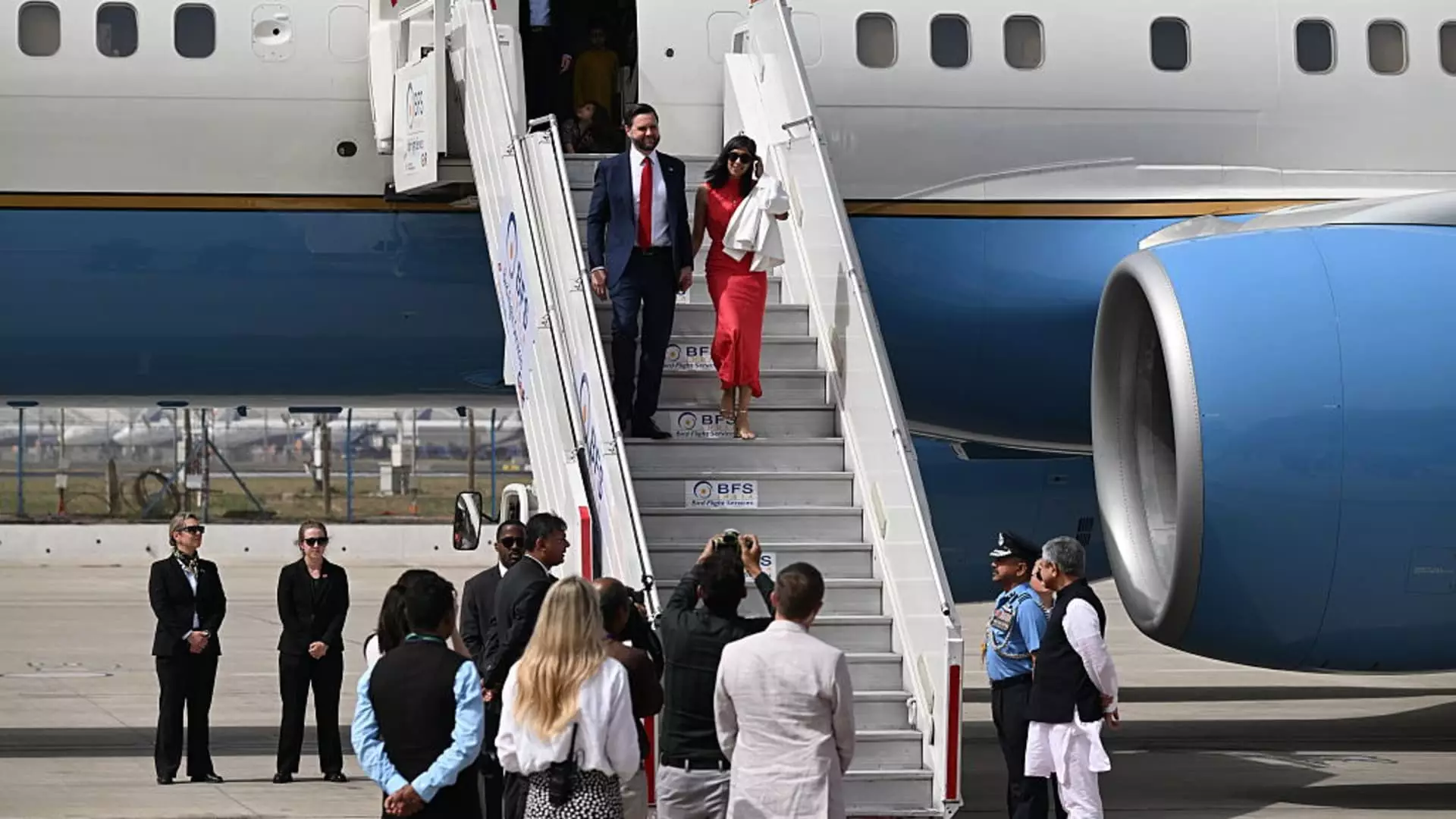As U.S. Vice President JD Vance embarks on a four-day diplomatic mission to India, the significance of this visit is multi-layered, woven intricately with personal and political threads. Not merely a ceremonial appearance, Vance’s journey is set against a backdrop rich in history and culture. Accompanied by his family, including his wife Usha—whose roots trace back to Indian immigrants—this visit promises to bridge the personal and diplomatic realms. The juxtaposition of intimate family moments, such as visiting the Taj Mahal and attending a wedding in Jaipur, with high-stakes talks with Prime Minister Narendra Modi emphasizes the nuance of modern diplomacy; relationships are better forged through personal understanding and shared cultural experiences.
Beyond the picturesque landscapes and ceremonial events, this visit serves as a focal point for addressing pivotal trade discussions. The urgency in New Delhi for an early trade agreement underscores a deeper dilemma: India’s attempt to navigate its relationship with the U.S. amidst an often combative global trade environment. Vance’s arrival offers an opportune moment for India to showcase its commitment to strengthening ties with the Trump administration, even as the latter continues to label the country as a “tariff king.” The underlying tension—between the need for clear, fair trade measures and the stark rhetoric of the U.S. administration—threatens to overshadow proceedings.
Economic Imperatives and Enigmatic Tariffs
The economic stakes involved in Vance’s visit are monumental. The U.S. stands as India’s largest trading partner—a title underscored by a staggering $129 billion in bilateral trade, yielding a notable surplus for India. However, the skewed perspective of tariffs has left the U.S. administration viewing India with skepticism. As the Vice President prepares for discussions, the question remains whether concrete commitments can emerge from the backdrop of mistrust and aggressive labeling.
What the economic landscape suggests is not merely the pursuit of trade agreements but the cultivation of a partnership characterized by mutual benefit. It is essential for both nations to eschew the entrenched trade protectionism that could suffocate cooperation. The proposed trade deal, aimed at cutting tariffs on a significant portion of goods, and Modi’s willingness to engage in negotiations underscore a desire for a healthier economic relationship. Yet, with Trump’s administration consistently criticizing India’s practices, the meetings may just lead to more rhetoric than reasonable solutions.
A Strategic Shift in Global Diplomacy
Vance’s itinerary hints at a broader strategic significance tied to the evolving dynamics in U.S.-China relations. As pressures mount globally, the prospect of solidifying U.S.-India ties cannot be overstated. This visit, while appearing routine, stands at the crossroads of opportunity and timing. The Quad alliance, which unites India, Australia, Japan, and the U.S., offers a platform for collaborative security arrangements—especially crucial in an age increasingly defined by geopolitical uncertainties.
Harsh Pant, a foreign policy expert, aptly points to the intensified U.S.-China rivalry, suggesting that Vance’s visit assumes an urgency that extends beyond bilateral relations. The multifaceted agendas—ranging from defense partnerships to economic cooperation—reflect the necessity of a cohesive strategy in countering shared challenges.
Despite the potential positives, one must remain skeptical about the outcomes of such visits. There seems to be an inherent contradiction in pressing for deeper collaboration while simultaneously benefiting from divisive rhetoric. Rather than simply a transactional dialogue, a true partnership demands a commitment to reconciliation, understanding, and growth.
Looking Beyond Ceremonial Norms
Ultimately, as Vance embarks on this crucial visit, the challenge lies in transforming ceremonial diplomacy into actionable policies. While the U.S. and India are on the brink of eschewing rigid tariffs, the real measure of success will be found in the ability to pivot conversations toward substantive commitments that transcend immediate political gain. The hope is for both nations to rise above outdated stereotypes and engage in partnerships that demonstrate mutual respect and reciprocal advantage.
In a world rife with ideological clashes and economic competition, opportunities like Vance’s visit should be viewed not just as political events but as necessary points of convergence. Only through genuine engagement, both at the personal and political levels, can countries hope to chart a path toward a cooperative and prosperous future.


Leave a Reply